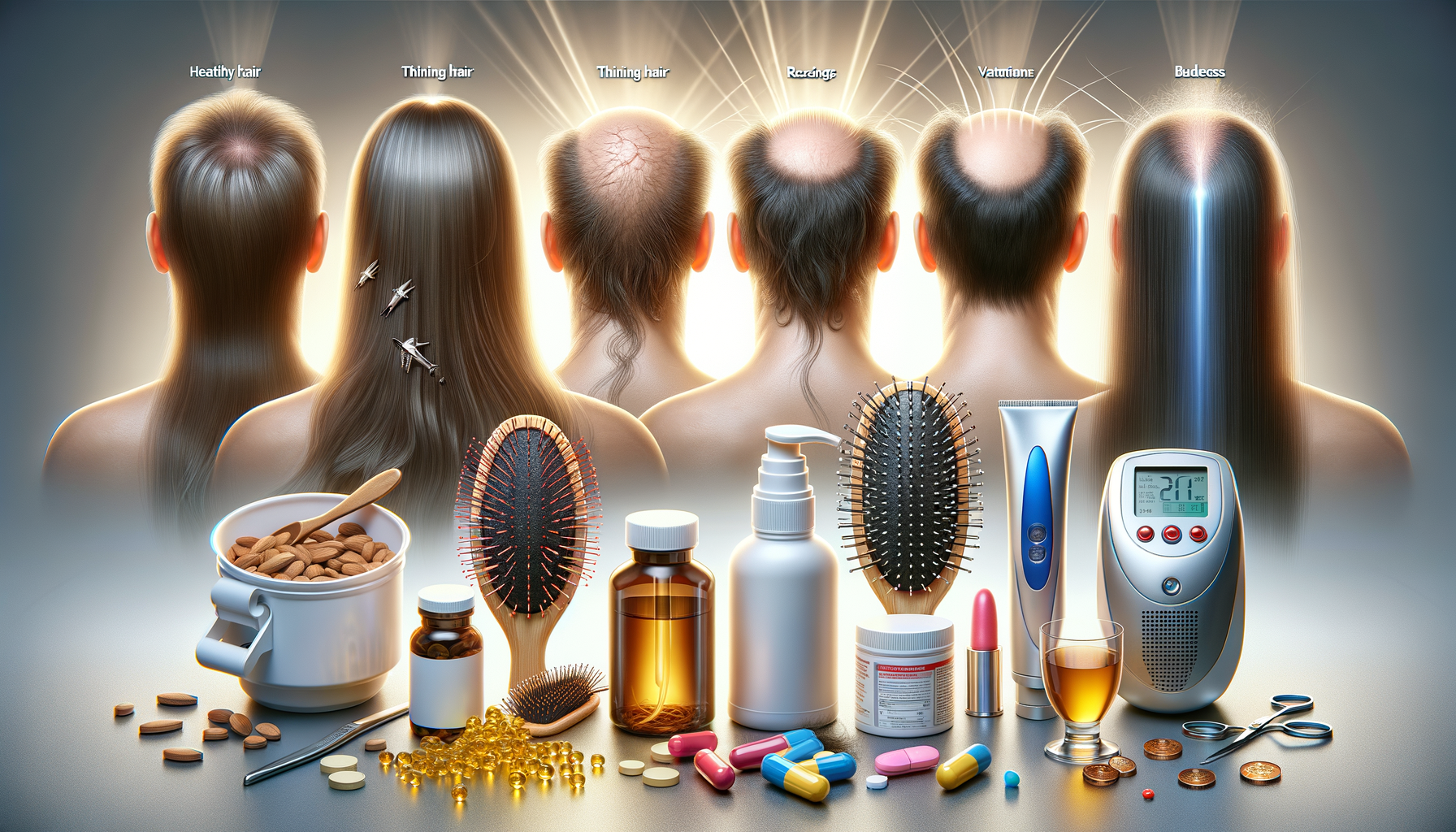The Science Behind Hair Loss
Hair loss, medically known as alopecia, is a common condition that affects millions of people worldwide. Understanding the science behind hair loss is crucial for managing it effectively. Hair grows from follicles located in the dermal layer of the skin. Each follicle follows a growth cycle consisting of three phases: anagen (growth phase), catagen (transitional phase), and telogen (resting phase). Hair loss occurs when this cycle is disrupted.
Several factors can lead to this disruption, including genetics, hormonal changes, medical conditions, and environmental influences. Genetic predisposition is one of the most common causes, often leading to androgenetic alopecia, also known as male or female pattern baldness. Hormonal imbalances, such as those caused by thyroid disorders or pregnancy, can also trigger hair loss.
Medical conditions like alopecia areata, an autoimmune disorder, cause the body to attack hair follicles, leading to patchy hair loss. Additionally, lifestyle factors such as stress, poor diet, and lack of sleep can exacerbate hair loss. Understanding these underlying causes is essential for selecting the appropriate treatment and management strategies.
Common Myths About Hair Loss
When it comes to hair loss, myths and misconceptions abound. One prevalent myth is that wearing hats frequently can cause hair loss. In reality, hats do not affect hair follicles and thus do not contribute to hair loss. Another common misconception is that frequent shampooing leads to hair loss. While it’s true that hair may fall out during washing, this is typically hair that was already in the telogen phase and ready to shed.
Some believe that cutting hair can prevent hair loss. However, haircuts do not influence the follicle’s health or the hair growth cycle. Another myth is that hair loss is solely a male problem. In fact, women also experience hair loss, often triggered by hormonal changes or medical conditions.
It’s crucial to separate fact from fiction to address hair loss effectively. Understanding these myths can help individuals focus on scientifically-backed treatments and avoid unnecessary anxiety over unfounded claims.
Effective Treatments for Hair Loss
Addressing hair loss effectively requires a combination of treatments tailored to the underlying cause. For those with androgenetic alopecia, topical treatments containing minoxidil can help stimulate hair growth. These products are applied directly to the scalp and can be effective for both men and women.
Oral medications, such as finasteride, are another option for treating male pattern baldness. These medications work by inhibiting the production of dihydrotestosterone (DHT), a hormone linked to hair loss. However, they are typically prescribed for men due to potential side effects in women.
For individuals with hair loss due to nutritional deficiencies, dietary supplements containing vitamins and minerals like biotin, zinc, and iron can support hair health. In more severe cases, medical procedures such as hair transplants or laser therapy may be considered.
It’s important to consult a healthcare professional to determine the most appropriate treatment plan based on individual needs and medical history.
Preventive Measures and Lifestyle Changes
While some causes of hair loss are beyond control, certain lifestyle changes can help prevent or slow the process. Maintaining a balanced diet rich in essential nutrients supports overall hair health. Foods high in proteins, omega-3 fatty acids, and vitamins A, C, and E are particularly beneficial.
Managing stress is another crucial factor, as chronic stress can exacerbate hair loss. Practices such as yoga, meditation, and regular exercise can help reduce stress levels and promote overall well-being. Additionally, avoiding harsh hair treatments, such as frequent coloring or heat styling, can prevent damage to hair shafts and follicles.
Regular scalp massages can improve blood circulation and promote hair growth. Using gentle hair care products and avoiding tight hairstyles that pull on the scalp can also minimize hair loss. By incorporating these preventive measures, individuals can maintain healthier hair and potentially reduce the risk of hair loss.
When to Seek Professional Help
While some hair loss is normal, excessive shedding or noticeable thinning may require professional attention. If hair loss is accompanied by other symptoms, such as itching, redness, or pain on the scalp, it’s important to consult a dermatologist or healthcare provider.
Early intervention is key to managing hair loss effectively. A professional can conduct a thorough examination, possibly including blood tests or a scalp biopsy, to determine the underlying cause. Based on the diagnosis, a tailored treatment plan can be developed to address specific needs.
Ignoring significant hair loss can lead to further complications, both physically and emotionally. Seeking professional help not only aids in finding effective solutions but also provides emotional support and reassurance.




Leave a Reply